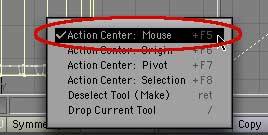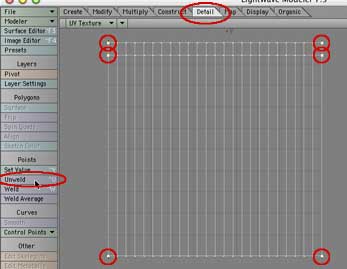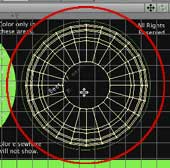
This is the second page of this tutorial. If you haven't finished the first page, you can find it here.
 |
Then tap Shift+Control+u on a Mac, or shift+ctrl+u for a PC (or go to Detail > Points > Unweld.) As soon as you do, you will notice that points appear on the left side of the map. |
 |
Shrink the map for the can bottom, exactly like we did for the lid, and place it within the white circle on the right.
As you can see, the words look fine on the bottom of the model. |
If you were planning to use this model in Lightwave, you're set. But if you wanted to export it as an .obj file, you can still do that, too. Just make sure that the map is being used in at least one channel when you export it, and the UVs will stick. (Color channel is best, since some programs ignore the other channels.)
So much for simple stuff. Continue to Lesson 2, if you want to see how to rotate the model so you can map from any angle.
If you have a question, write to me and ask it!
Everything on this site is copyright © Robin Wood; all rights reserved. Please do not use anything without permission. To get permission, write to Robin, and explain what you intend to use it for.